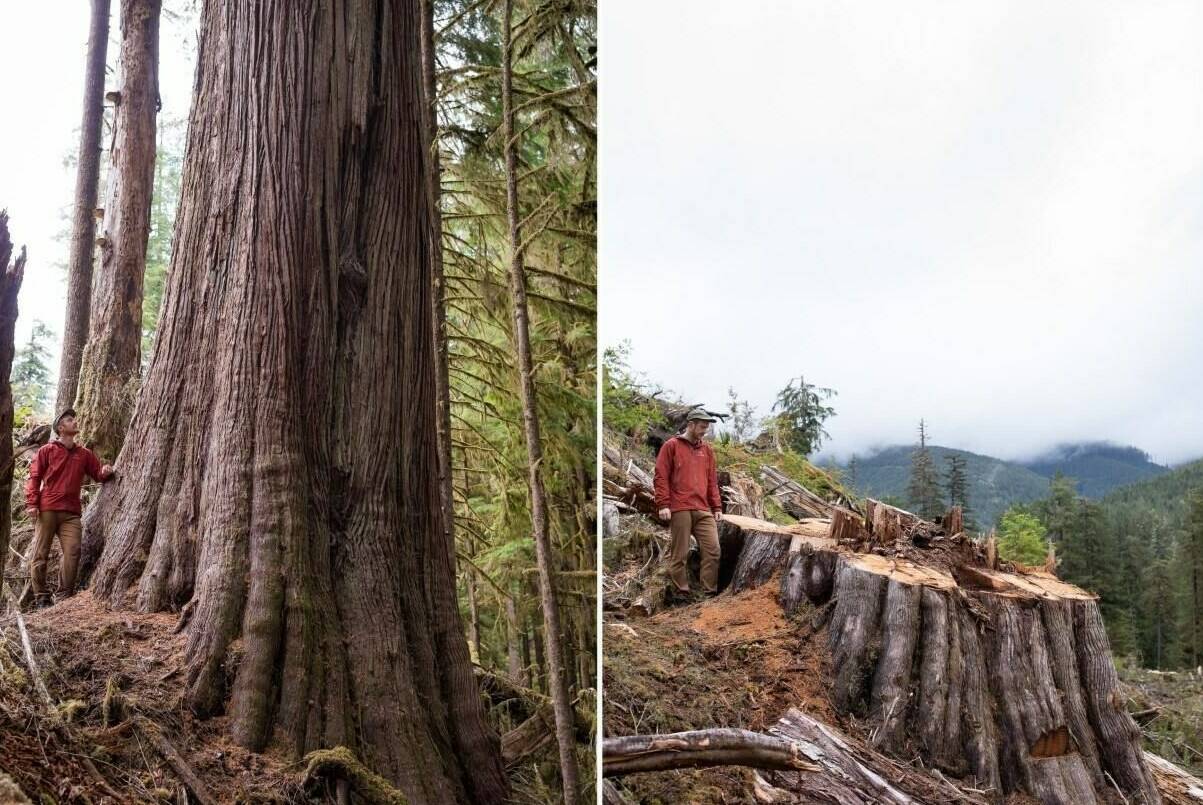B.C. plans to accelerate the deferral of harvesting old-growth trees within the next year while trying to help the industry get more value out of a reduced fibre supply.
But that is only part of the changes coming as the province continues to revamp its forest industry.
Premier David Eby and forest minister Bruce Ralston today announced eight steps to rev up the deferral process first revealed in November 2021. The government asked First Nations to identify 2.6 million hectares of old-growth forest for deferral after a review panel had recommended that figure. It said Wednesday that 2.1 billion hectares have been identified so far — not all of them on the original map.
Eby highlighted two measures designed to help the process. The first sees the province put $25 million helping 50 First Nations toward the development of eight new management plans under the deferral process.
The second sees the province double an existing $90M fund to $180M to help address industry job loss tied to reduced supply. The additional funding will help retro-fit mills to use smaller logs among other measures designed to add value to existing supplies.
The province is also repealing regulations that place timber supply over all other objectives, including water quality, wildlife habitat and biodiversity. Critics of forest companies have previously called that language a loophole that has allowed companies to sidestep environmental protection.
About 1,100 individual forest stewardship plans currently govern forest development across the province and Ralston said the province cannot require companies to immediately amend them because it would trigger extensive consultation.
But forest companies need to ensure they will be able to comply with the amended regulations when their existing plans come up for renewal every five years or if they are developing a new plan. Progressive companies will do this work themselves, he added.
The government also promises to protect more old-growth forests and biodiverse areas by leveraging donations to fund conservation measures through a new financing system set up within six months and developing alternatives to clear-cutting.
Leonard Joe, chief executive officer of the First Nations Forestry Council, and Garry Merkel, one of the authors of the Old Growth Strategic Review (OGSR), joined Eby and Ralston in announcing the measures.
Eby also acknowledged the old growth management plan remains a work in progress, having said earlier that it will undergo a strategic review later this year. Some First Nations have been also critical of the plan because they lack the resources to take part in the deferral process or because they want to do more logging themselves.
“Yes, this is an approach that puts…First Nations’ perspective at the centre of the plan and nations have different approaches to their territory when it comes to forestry,” Eby said. “It’s more challenging to do it this way because there are so many nations across the province and that is why it requires the investment we are announcing today.”
BC Council of Forest Industries meanwhile, signalled its support for today’s news.
“Today’s announcement includes positive steps towards putting the necessary investments, frameworks and relationships in place to advance how old growth forests are conserved and managed in the province,” said Linda Coady, COFI’s chief executive officer and president.
Speeding up the old growth review process will also support land use planning at the local level, she added.
“Strengthened Indigenous and local engagement on land use planning at the regional level will help ensure goals for forest health and biodiversity are met while also creating more predictability for workers, communities and forest-related businesses across BC,” she said.
RELATED: Giant trees still fall amid old-growth funding lag for B.C. First Nations
RELATED: B.C. old-growth logging deferrals exceed Great Bear Rainforest
@wolfgangdepner
wolfgang.depner@blackpress.ca
Like us on Facebook and follow us on Twitter.

